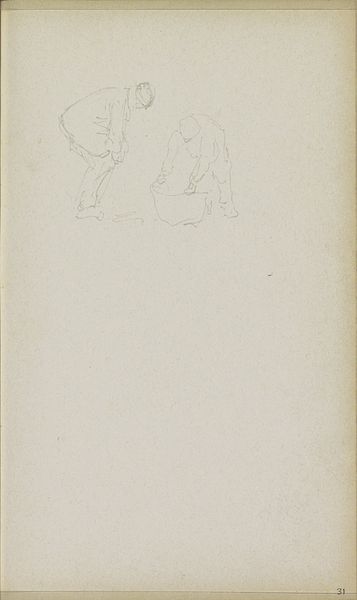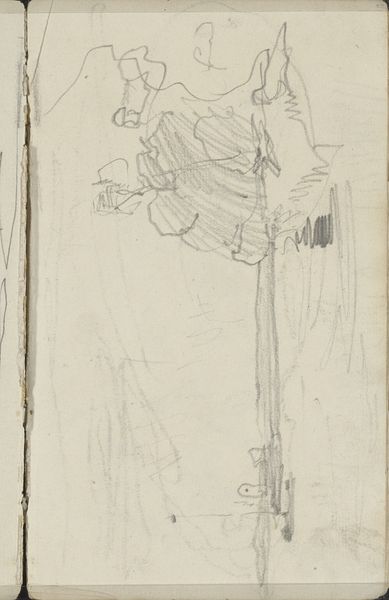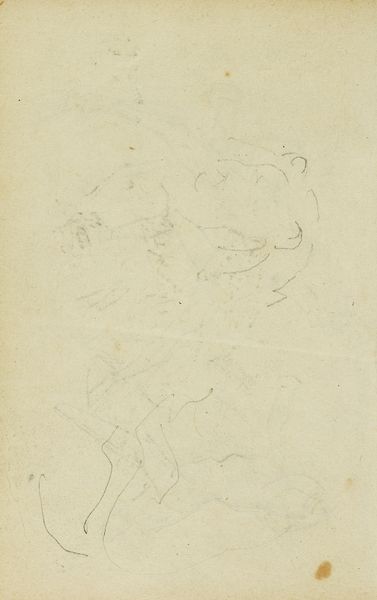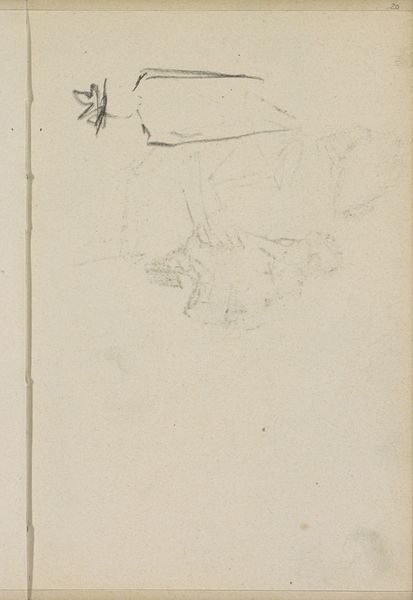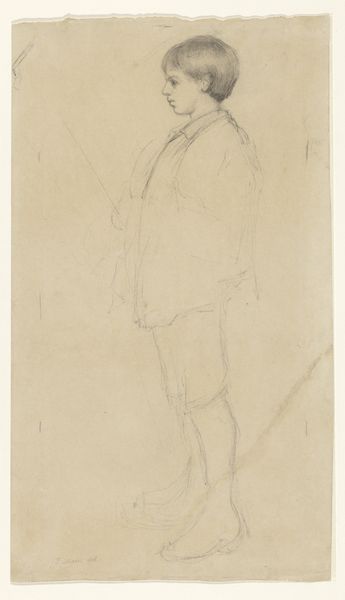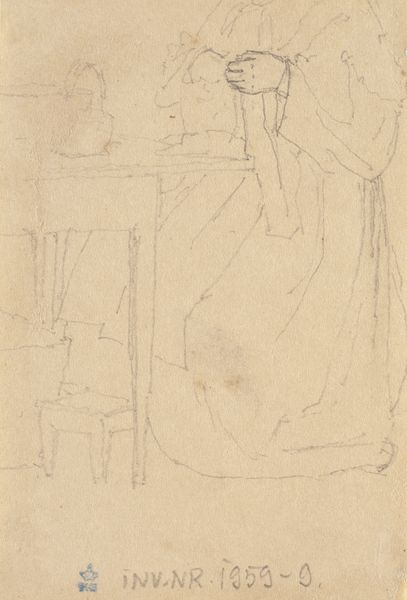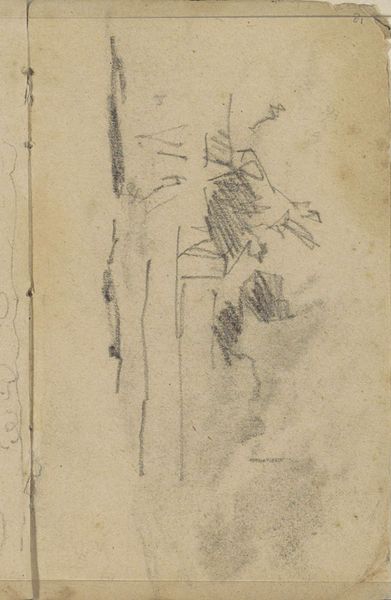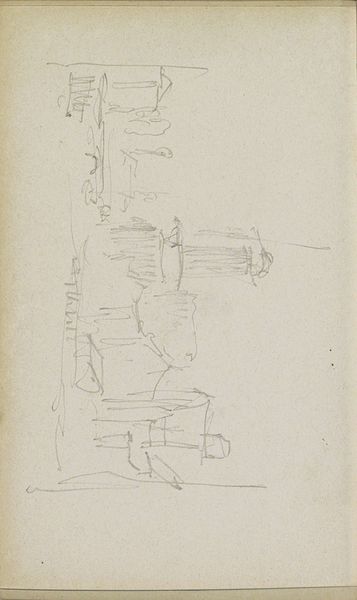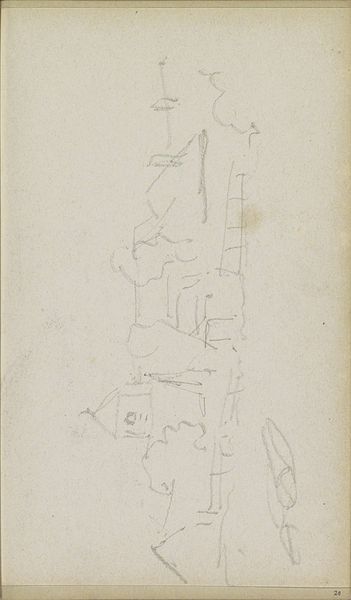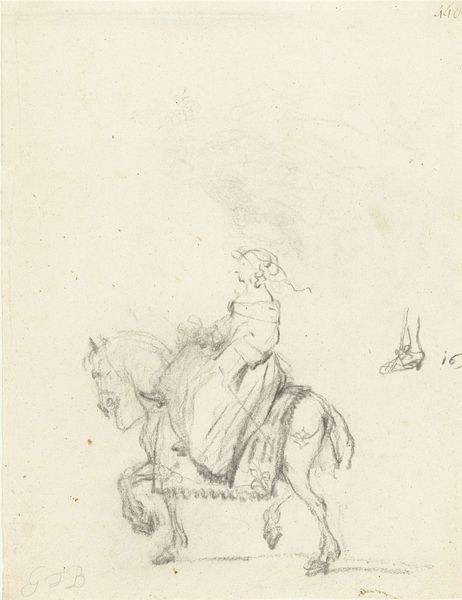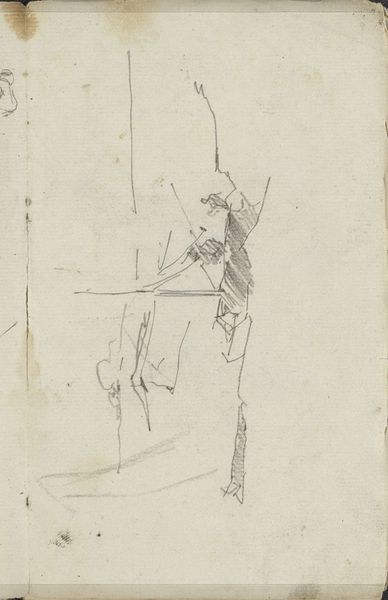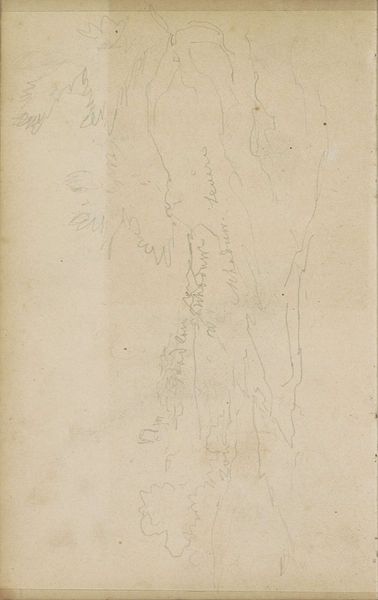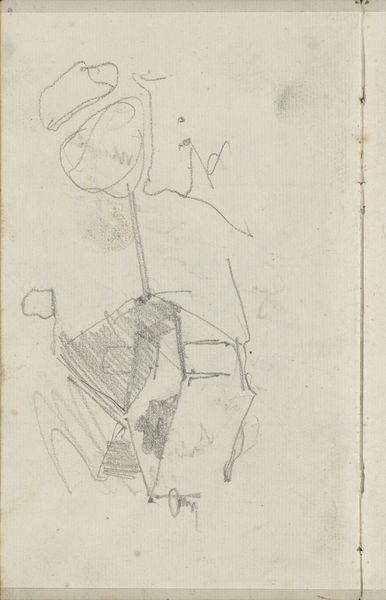
Siddende, tegnende eller skrivende mand ved et træ 1810 - 1845
0:00
0:00
drawing, pencil
#
portrait
#
pencil drawn
#
drawing
#
landscape
#
romanticism
#
pencil
#
genre-painting
Dimensions: 163 mm (height) x 86 mm (width) (bladmaal)
Editor: Here we have Christen Købke’s “Siddende, tegnende eller skrivende mand ved et træ,” created sometime between 1810 and 1845. It's a delicate pencil drawing. I’m struck by the sense of solitude it evokes, the figure almost disappearing into the landscape. What do you see in this piece? Curator: I see a potent symbol of the Romantic era’s fascination with the individual’s relationship to nature. Notice how the figure, despite his somewhat formal attire, is nestled within the organic forms of the tree. It reminds us of Caspar David Friedrich's wanderers, doesn’t it? This placement suggests a longing for integration with the natural world, a seeking of solace or inspiration. Editor: That's interesting. So you're saying his posture or dress holds clues about how to understand this interplay? Curator: Absolutely. Consider the act of drawing or writing itself. It's an act of interpretation, of attempting to capture and understand the world around us. The man isn't simply present in the landscape; he's actively engaging with it, translating it through his own subjective lens. His top hat seems rather incongruous to being in the woods, don't you think? That tells us that his persona and intentions are not one with the nature he draws. Editor: It hadn’t occurred to me to consider that level of visual symbolism, but the incongruity makes the scene so much richer and the emotional meaning much more pronounced! Thanks so much! Curator: You’re welcome. Examining symbols like this is useful for appreciating not just the historical art, but for considering how we engage and perceive art.
Comments
No comments
Be the first to comment and join the conversation on the ultimate creative platform.

